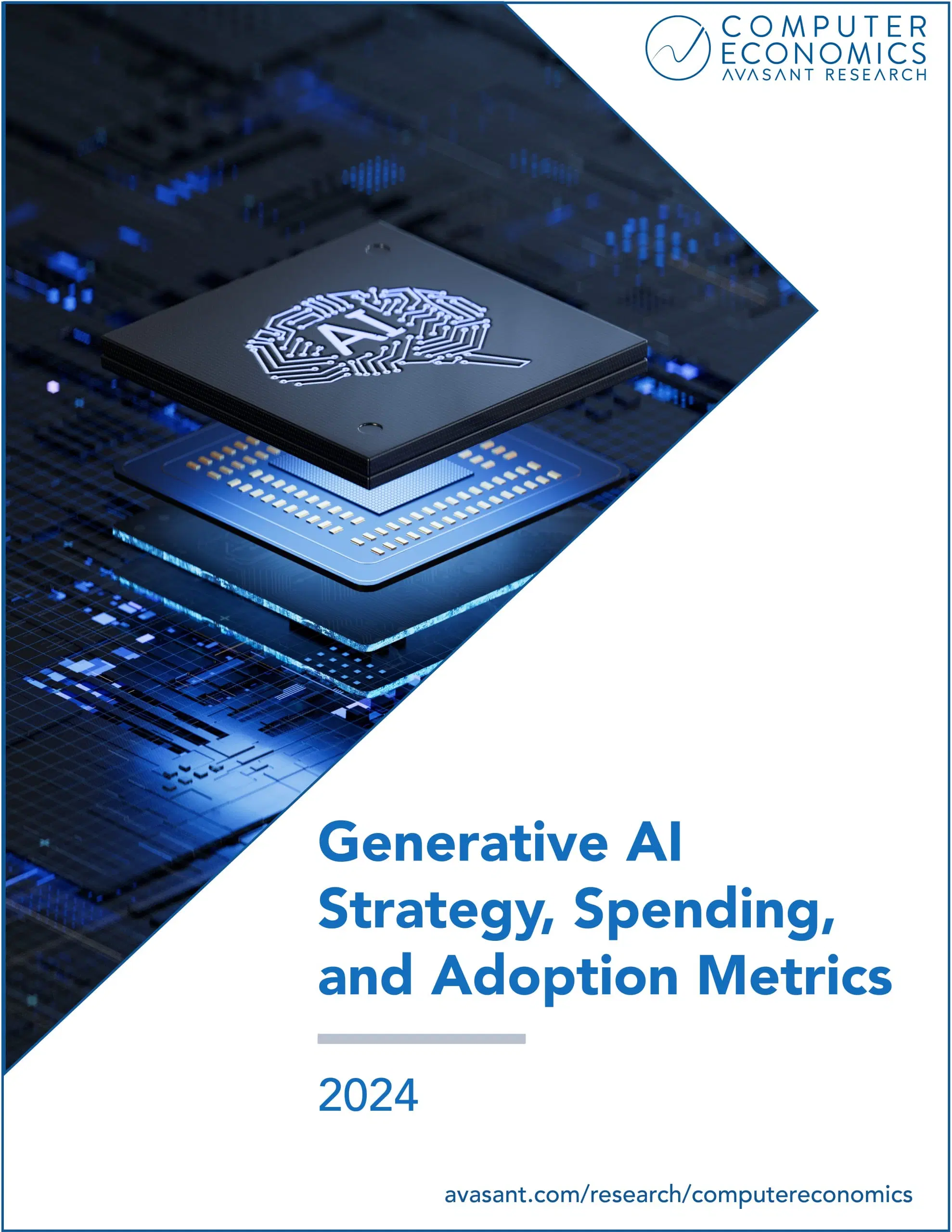and Data
Get actionable insights from practitioners.
RadarView™
Market Assessments
Computer Economics™
IT Metrics
Tech
Innovators
Emerging Trends
& Predictions
Global Equations™
Location Intelligence
Generative AI Strategy, Spending, and Adoption Metrics
This study of eight chapters provides metrics on how much enterprises are spending on generative AI, where they are spending it, and how they are governing it. The study provides chapters featuring the same data for six industry sectors complete with specific use cases for those industries.
Industry sectors include manufacturing; retail; banking, financial services, and insurance (BFSI); healthcare; professional services; transportation; and IT services and solutions.
This study looks at nearly 200 companies that have already adopted some form of generative AI within their organizations. As early adopters, many have established centralized strategies driven at the C-suite level. They are leading the way to discover use cases and how to pay for these initiatives. The industry chapters provide 22 figures with data ranging from the strategic importance of AI to staffing and budget numbers to usage data.

PURCHASE/DOWNLOAD: BY CHAPTER
Clients: Log in and download, at no charge, from any link below.
Not a client? Click any link to see pricing and to purchase now.
Chapters
Chapter 1: Executive Summary [Free Download]
Chapter 2: Composite Benchmarks
Chapter 3: Manufacturing
Chapter 4: Retail
Chapter 5: Banking, Financial Services, and Insurance (BFSI)
Chapter 6: Healthcare
Chapter 7: Professional Services
Chapter 8: IT Services and Solutions
Key Metrics in the Composite and Sector Chapters
The content and metrics for each chapter of the full report, starting with Chapter 2, are provided below.
Section 1 provides insight into the generative AI strategy and governance structure for Gen AI programs for all organizations in the chapter sample. These statistics include standard measurements of organization revenue, number of employees, and generative AI budget. It also covers the strategic importance of generative AI, how it is governed in the organization, its potential financial impact of Gen AI, and its budget location.
These metrics are as follows:
- Organization size demographics, including revenue, employees, and Gen AI budget
- The strategic importance of Gen AI
- Financial objectives of Gen AI, whether productivity improvements or top line revenue
- The use of governance models for GenAI including centralized, federate, and decentralized, and where the central authority lies
- The organizational unit responsible for the Gen AI budget
Section 2 provides Gen AI spending and staffing metrics:
- Gen AI spending as a percentage of IT spending
- Gen AI spending per employee
- Gen AI spending as a percentage of revenue
- The impact of Gen AI on jobs
- Level of Gen AI program outsourcing
- Gen AI support staffing numbers, both internal and external, as well as support staff per employee
Section 3 breaks down which business functions are using generative AI, and what they are doing with it. We offer use cases and examples directly from our survey respondents. We also show adoption and investment numbers for six specific types of generative AI, for generating text, image, program code, video, voice, and music. Finally, this section details the greatest fears in implementing generative AI and gives some potential advice on mitigating these risks.
These metrics include:
- Business functions using AI, including software development, customer service, operations, HR, supply chain/procurement, product development, marketing, F&A, and sales.
- Adoption numbers for types of Gen AI including the use of Gen AI for text generation, image generation, program code, video generation, voice, and music generation.
- How enterprises deploy Gen AI including embedded in commercial software, publicly available platforms, through APIs, or through building proprietary LLMs.
- Top concerns about deploying Gen AI



